Celebrating first Mother's Day after a fight to save Baby Violet from being born too early
Some surprises are in store for first-time mother Lucero "Luci" Hanson this Mother's Day.
"The gifts are figured out," said husband Philip Hanson. 30. "The details, not yet."
Luci Hanson's biggest gift and her biggest surprise is daughter Violet.
Motherhood, Luci Hanson said, "It's been the best. She makes me feel so whole and complete."
Luci Hanson, 28, is grateful to for every day with Violet.
Violet was born Nov. 18 at 25 weeks and six days gestation, after Luci Hanson underwent emergency surgery at 20 weeks gestation to help keep Violet in utero as long as possible.
The Hansons were lucky. At the anatomy ultrasound when Luci was 20-weeks pregnant, the technician and her obstetrician found a problem with her cervix — it had no detectible length.
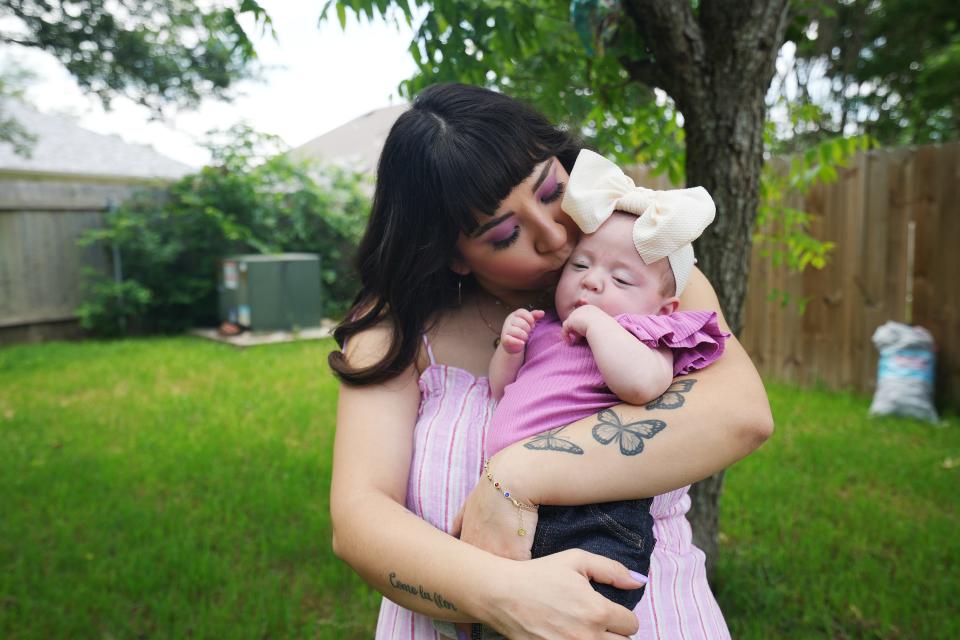
When the cervix, which is the tissue that connects the uterus to the vagina, is shortened, it makes it more difficult for a person to carry a baby to term. Measuring cervical length is often not part of the screening process unless a mother has a history of preterm births.
In Hanson's case, this was a first baby, but her ultrasound picked up the problem.
With information from an additional screening, Luci Hanson's doctors were able to give Violet a chance for survival.
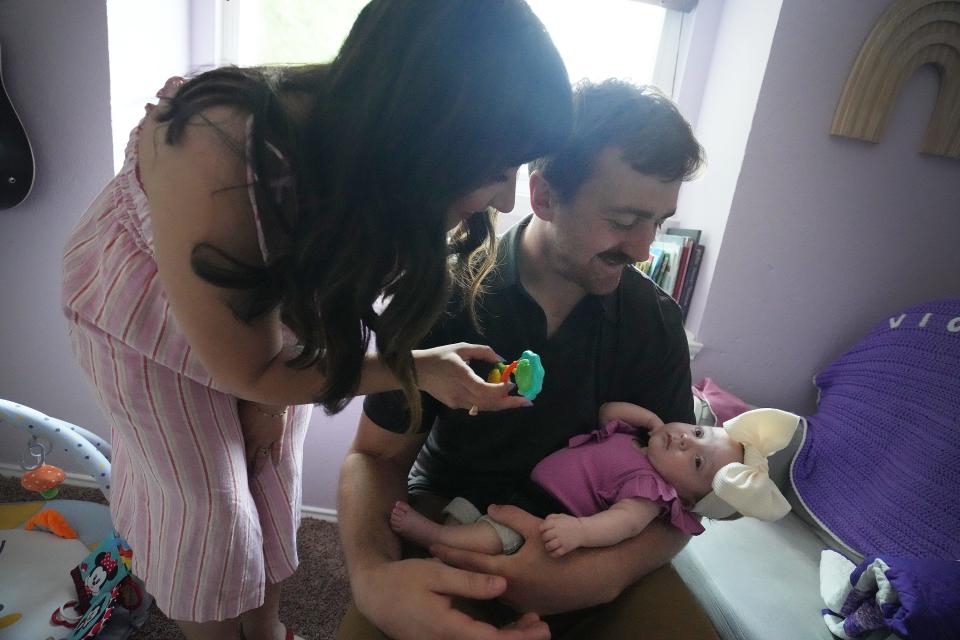
A typical pregnancy
Up until that 20-week scan, Luci Hanson said her pregnancy was "pretty standard." She originally thought she might have COVID-19, because she felt rundown, but it turned out to just be the "pregnancy flu." Like many pregnant people, she also had morning sickness.
The Hansons had done early genetic screenings and found out the baby didn't have any detectible abnormalities. They also found out they were having a girl.
They celebrated in August with a "Star Wars"-themed gender-reveal party. Philip as a Jedi with a purple light saber defeated his brother as a Jedi with a blue light saber.
All of Luci Hanson's ultrasounds and bloodwork continued to be normal, and she was starting to think about creating her birth plan.
Getting the bad news
At that 20-week scan when Luci Hanson's cervix was not measurable, her doctor let her know what they thought the issue was, but Hanson would need a specialist to confirm.
"It went so fast," Luci Hanson said.
The next day, they were seeing Dr. Kimberly DeStefano, medical director of maternal fetal medicine at St. David's Women's Center of Texas. Another anatomy ultrasound and a vaginal ultrasound confirmed that Luci Hanson's cervix was 0.33 centimeters. Normal would be 2.5 centimeters to 4.5 centimeters, DeStefano said.
DeStefano said her practice group started screening all women for shortened cervixes six years ago, "but not everybody does it." The Society for Maternal-Fetal Medicine and the American College of Obstetricians and Gynecologists have not recommended for or against it, but let practitioners decide on a case-by-case basis unless a woman has known risk factors.
Doctors don't know why a cervix shortens, DeStefano said. Some people with connective tissue disorders have an increased risk. People who have lost a baby or had a preterm birth because of a shortened cervix are also more at risk for this to happen again. Some people also have a congenital anomaly in their cervix.
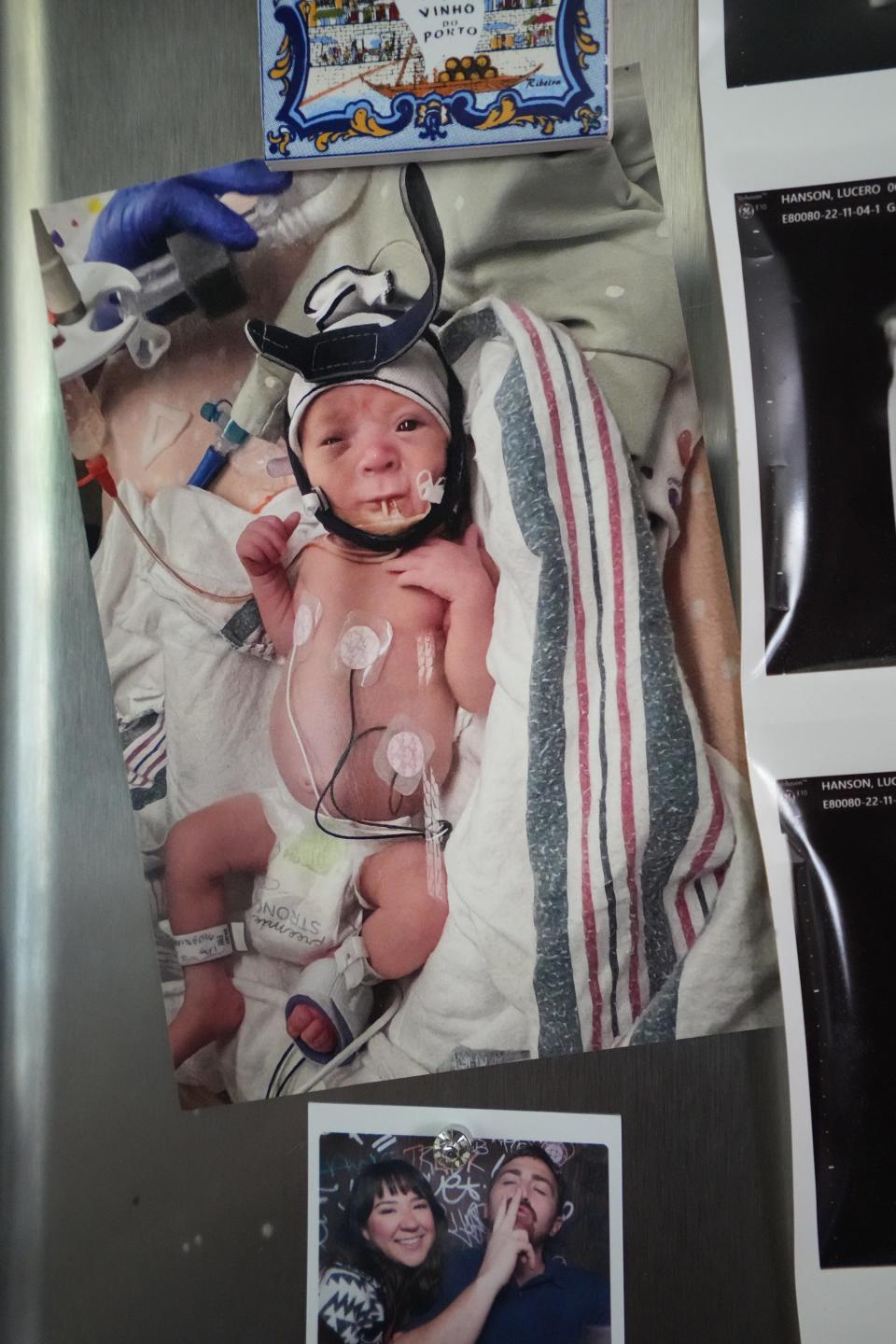
About 1 in 100 pregnancies will have a shortened cervix, also called an incomplete cervix, but only about 1 in 1,000 pregnancies will have a severe case like Hanson's, DeStefano said.
Sometimes there are symptoms such as early labor or a discharge, but often, like with Luci Hanson, there are no symptoms. She would have just gone into preterm labor, possibly before Violet was viable.
Once Luci Hanson had the diagnosis, they gave her the hormone progesterone to see if that medicine would help increase the length of her cervix. It did not. The next day, Luci Hanson found herself in an operating room, fully awake but with a spinal block to not be able to feel below her waist.
"I was so scared," she said.
DeStefano performed a cervical cerclage, a surgical procedure to prevent the cervix from dilating by going in through the vagina and putting a purse-string suture around the cervix to close it like a drawstring bag.
DeStefano explains that it's not just the act of closing the cervix. The cerclage also prevents the early biochemical reaction that happens during childbirth when the walls of the cervix begin to thin.
People with a known risk factor, such as a previous shortened cervix, will have the cervical cerclage done between 11 weeks and 13 weeks gestation.
A cervical cerclage, "is not a fix-it," DeStefano says, but it prevents further changes, hopefully, and "delaying the inevitable," she said.
The Hansons said DeStefano was really good about setting expectations. The cerclage would give them the best shot, but it might not save their baby. Luci Hanson could go into labor at any time.
At 20 weeks, Violet would not have been able to survive outside the womb. Some babies have survived after being born at 22 weeks, but that's rare. A baby before 26 weeks gestation is considered a micro preemie.
While the ideal is to get to 38 weeks, for the Hansons, they were now shooting to at least get to 28 weeks for Violet to have the best shot of surviving.
Hours after the cerclage, the Hansons were home again. Luci Hanson was put on light bed rest. She could work from home, but she could not exercise. They recommended she only go up and down the stairs in her home once a day.
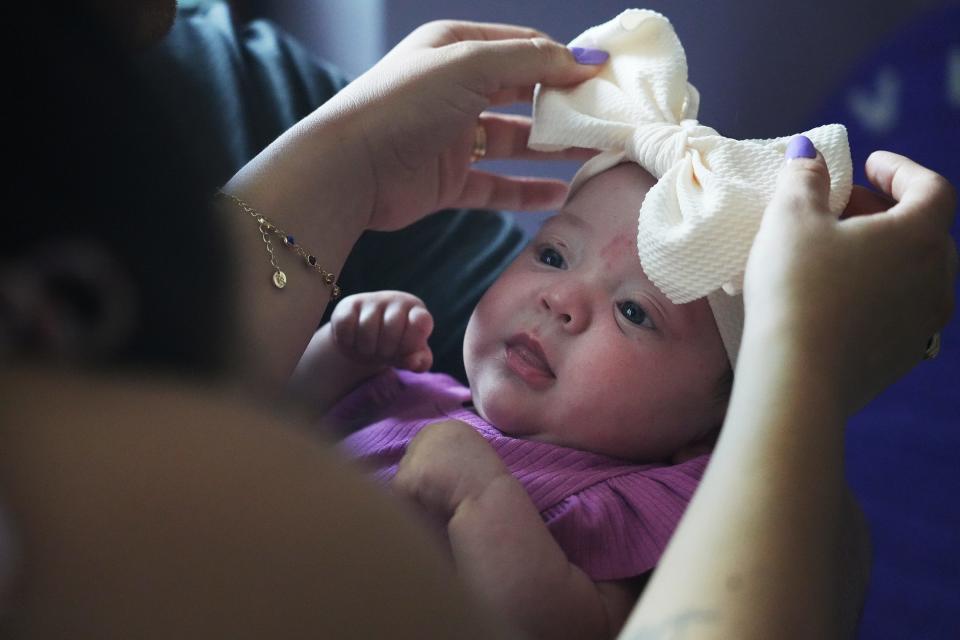
Checking in on Luci and Violet
Every week, the Hansons went to see DeStefano to have the cervix measured. At first, they were excited. The cervix began to lengthen, first 0.5 centimeters, then 0.7 centimeters, then 1.2 centimeters.
"We're going to make it to 28 weeks!" Luci Hanson remembers thinking.
But then in the fourth week, her cervix went back down to 0.7 centimeters and then 0.5 centimeters. They gave her two steroid shots to help the baby's lungs develop.
"We were having different conversations," Luci Hanson said.
Right at 25 weeks, Luci Hanson started having discharge with blood in it and a pain throughout the day that wouldn't let her sleep. More blood and discharge appeared.
Luci Hanson's light bedrest became hospital bedrest on Nov. 15.
Doctors gave her magnesium to try to stop the labor as well as help the baby's brain. Every second counted, and Luci was trying to keep Violet in for as long as possible.
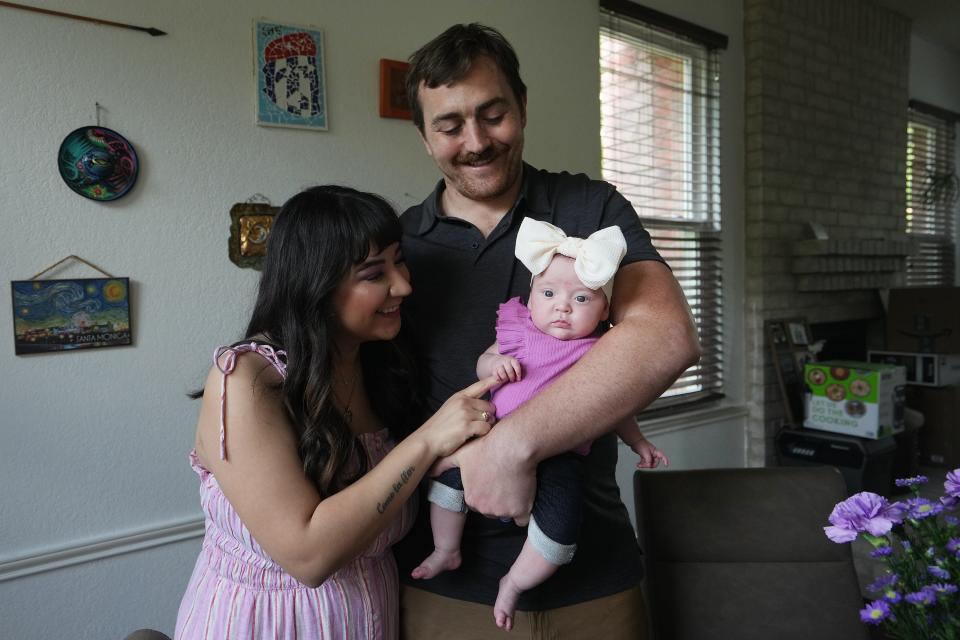
By Nov. 17, Luci Hanson's contractions were getting closer together. Her water broke. Violet's heart rate had also changed. They could not stop the labor. DeStefano took out the cerclage and let the labor progress naturally. Luci Hanson was already 5 centimeters dilated, halfway to fully dilated.
They gave Luci Hanson magnesium again to help with the baby's brain.
On Nov. 18, Luci Hanson was pushing out Violet. "She let out a crying sound," Luci Hanson said. "That was a sigh of relief for myself."
For Philip, "I couldn't believe how little she was. She was like a movie rubber baby. She looked a little bit fake and red," he said. But she also showed her strength. She was moving around and grabbing things, he said.
Violet was quickly put on Luci's belly for a few seconds, and the nurses took a few photos before Violet was put in an isolette and taken to the neonatal intensive care unit.
Even though the Hansons didn't get to 28 weeks, getting an additional five weeks when they started with "no measurable" cervix "was a pretty good outcome," DeStefano said. Sometimes she will put in a cerclage and the baby will still come within days.
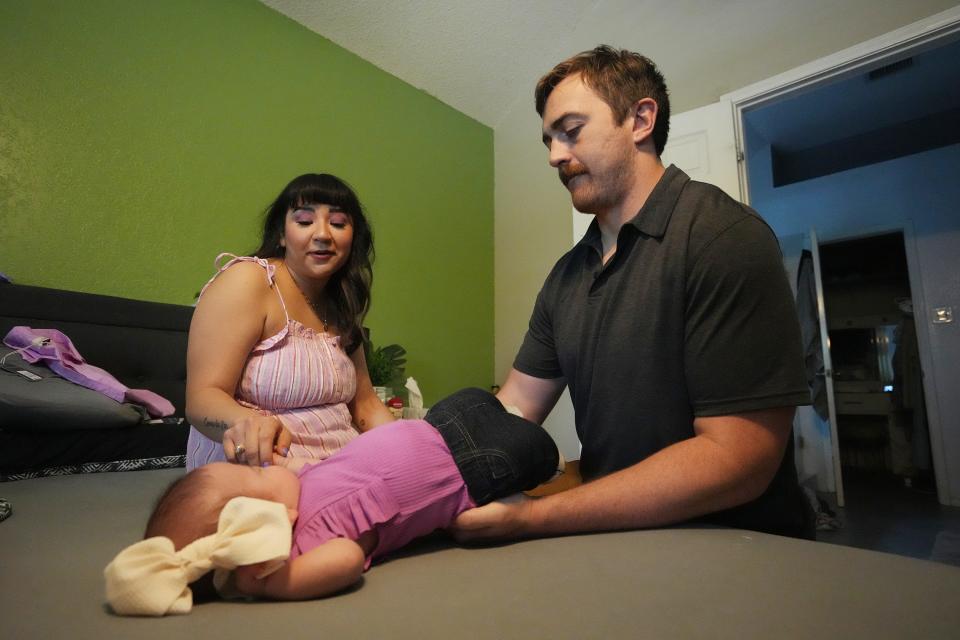
104 days until home
In the neonatal intensive care unit, "we took it day by day," Luci Hanson said.
There was steady progress, and they worried about the next test and then the next test. "It never crossed my mind that she wasn't going to make it," Philip Hanson said.
Violet was strong and never on a ventilator. She had two different kinds of CPAP (continuous positive airway pressure) machines, but not a ventilator.
Brain scans continued to come back OK.
By late February, it was clear that Violet was ready to come home.
"I just burst into tears," Luci Hanson said. The NICU had become so much a part of their life.
Home at last
On March 2, they walked out of the hospital with their baby. Philip likens it to computer programming, in which everything is new at first. "Hello world," he said. "This is the first time she was outside. 'That's a tree.' ... things like that. It's so fun to be able to point out the typically mundane" to her.
Those first few nights at home in Pflugerville were scary. There were no beeping monitors to tell them how she was doing.
"She would get so still sometimes," Philip Hanson said, but she was fine.
They call Violet their "little miracle."
Each day they celebrate by telling each other that day's highs, that day's lows and that day's "Vi's": what did Violet do today. Like the day when she giggled while doing her physical therapy to make up some of the gaps from being premature. That was that day's "Vi."
Violet likes to suck her thumb, and she loves both of her grandmothers.
She loves to watch "The Powerpuff Girls" cartoon with her dad, and she's very clear she does not like tummy time.
"She's so funky," Luci Hanson said. "I love her."
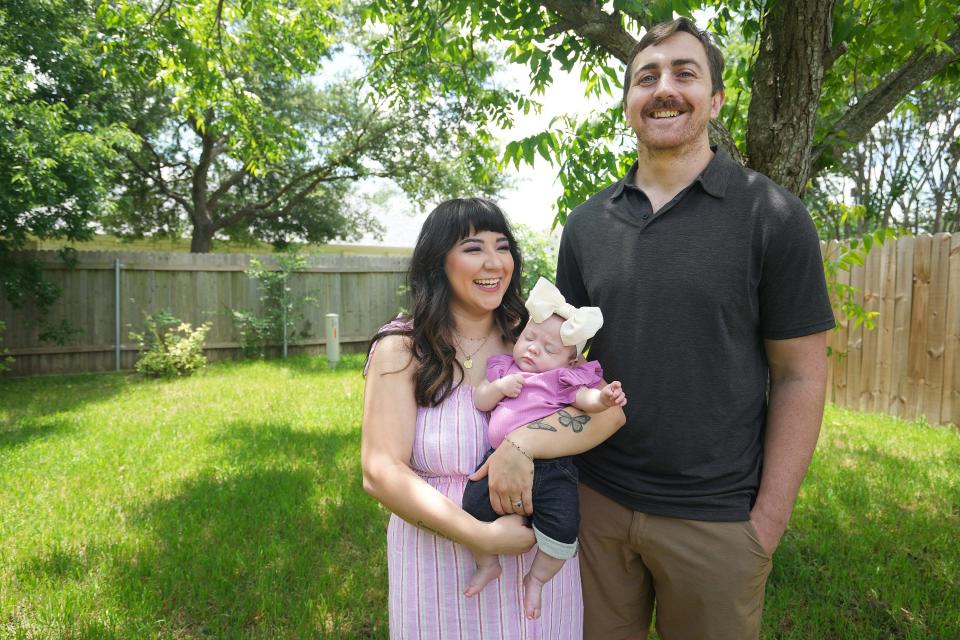
This article originally appeared on Austin American-Statesman: Cervical cerclage surgery in pregnancy helped Pflugerville baby live

